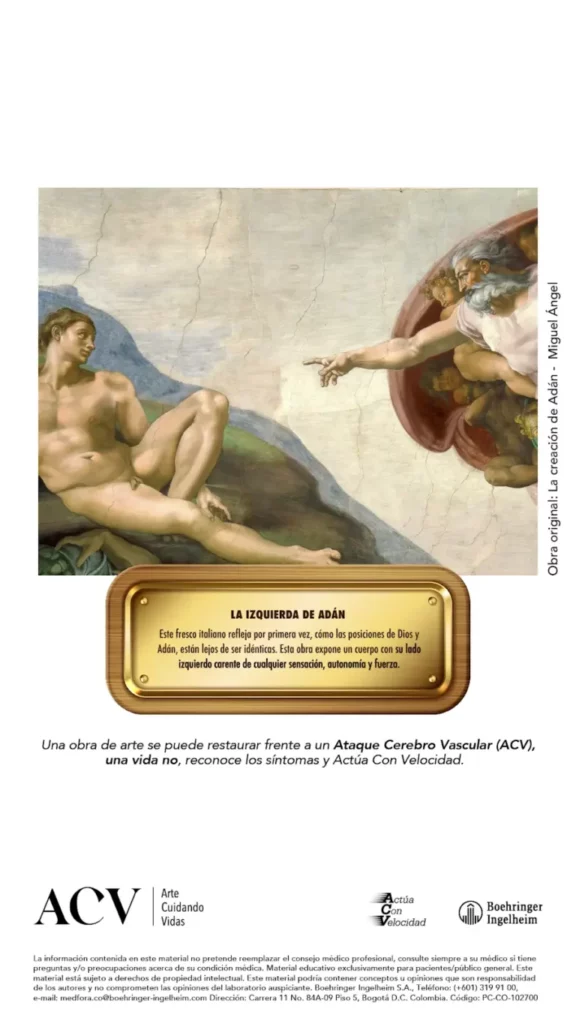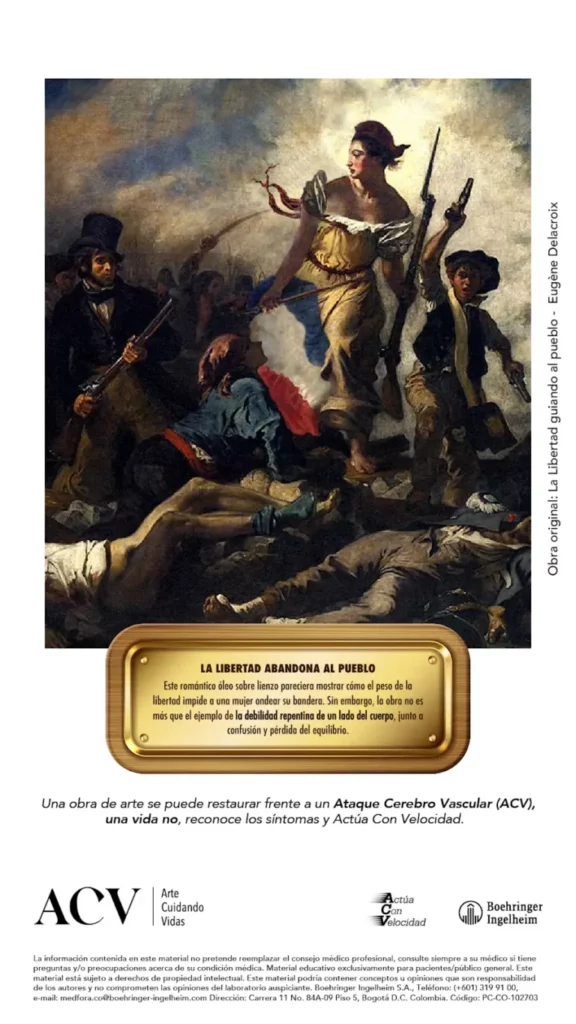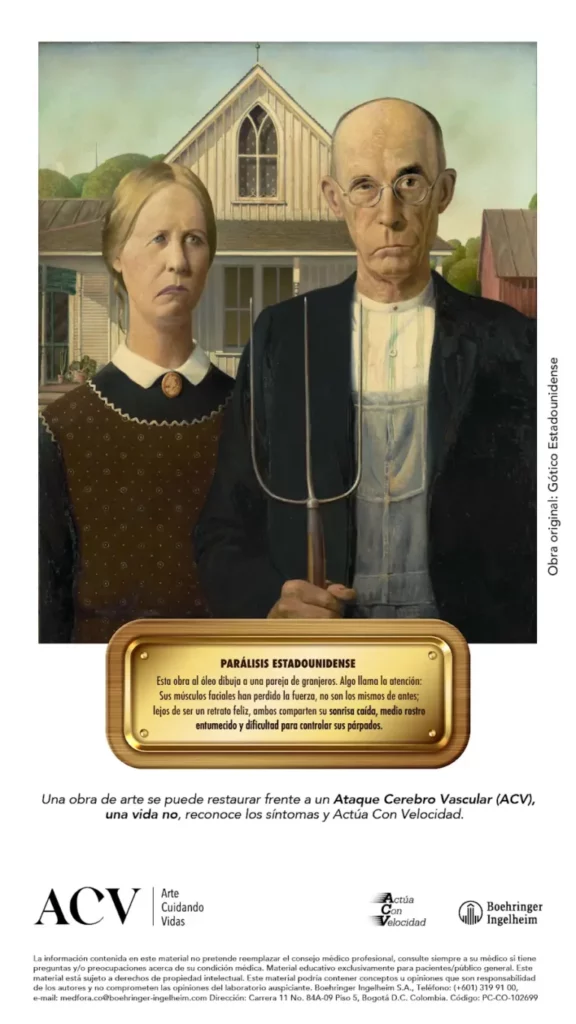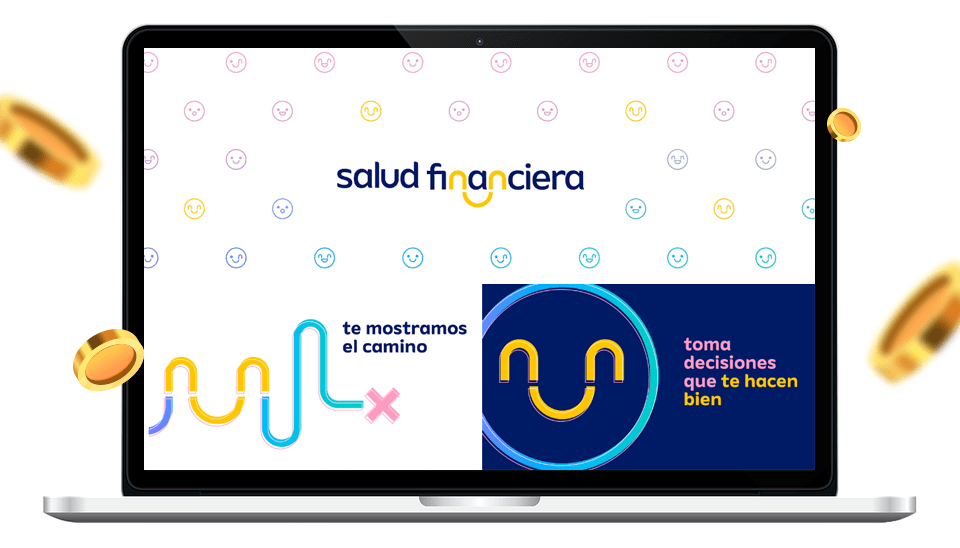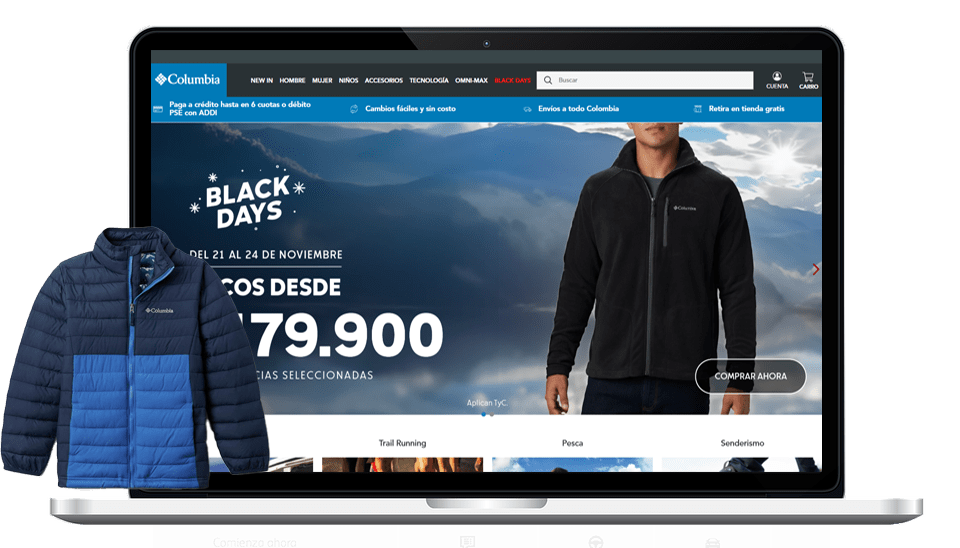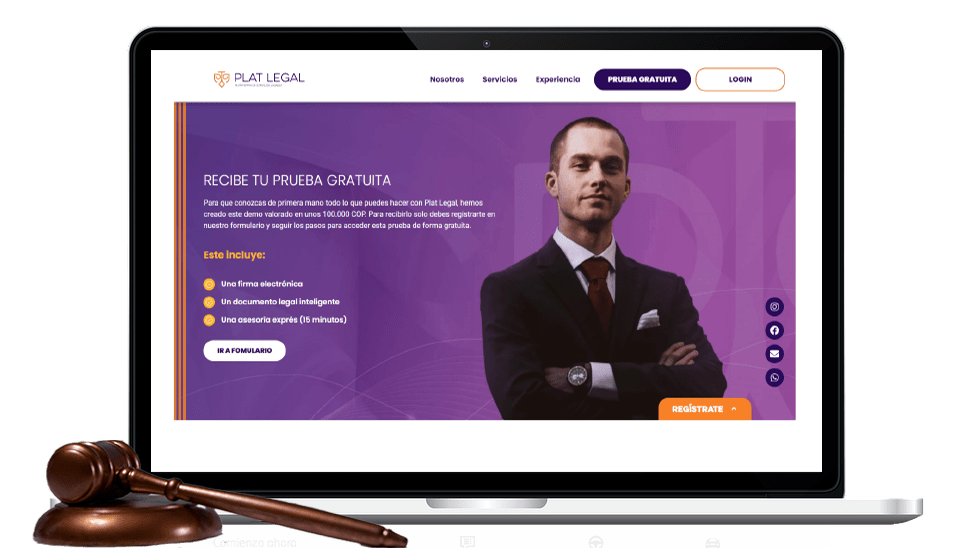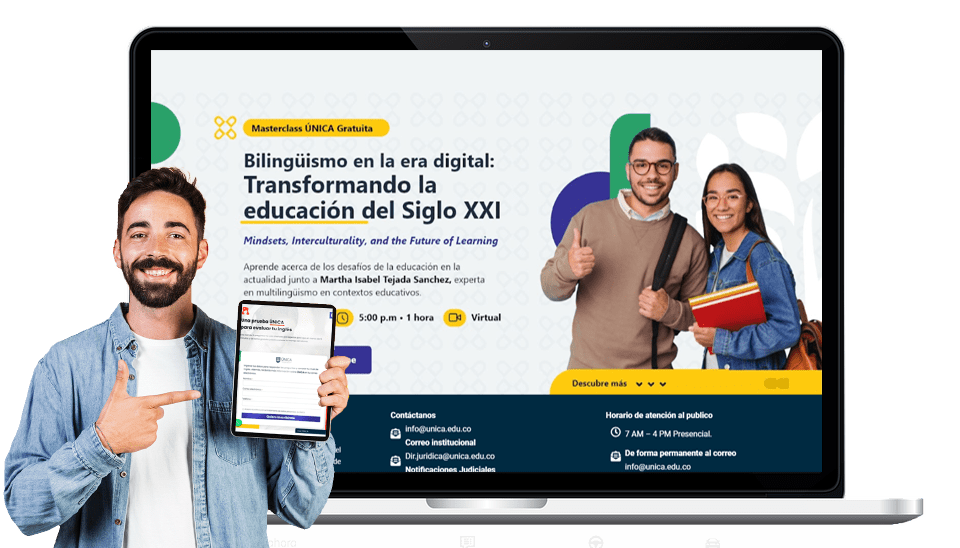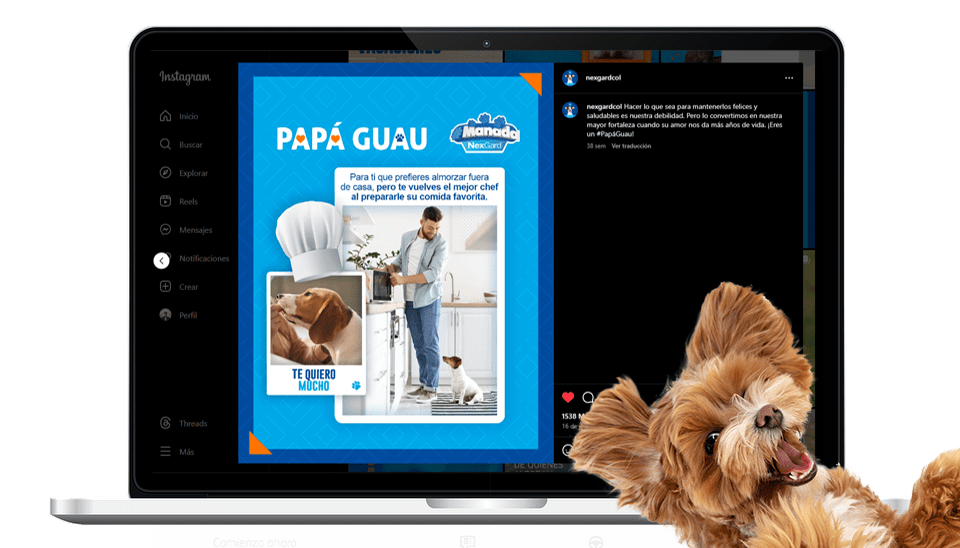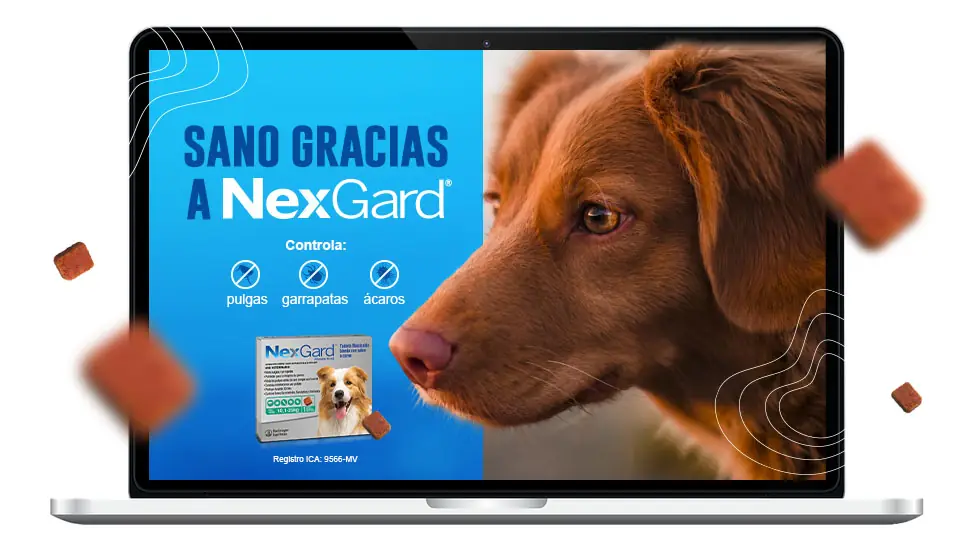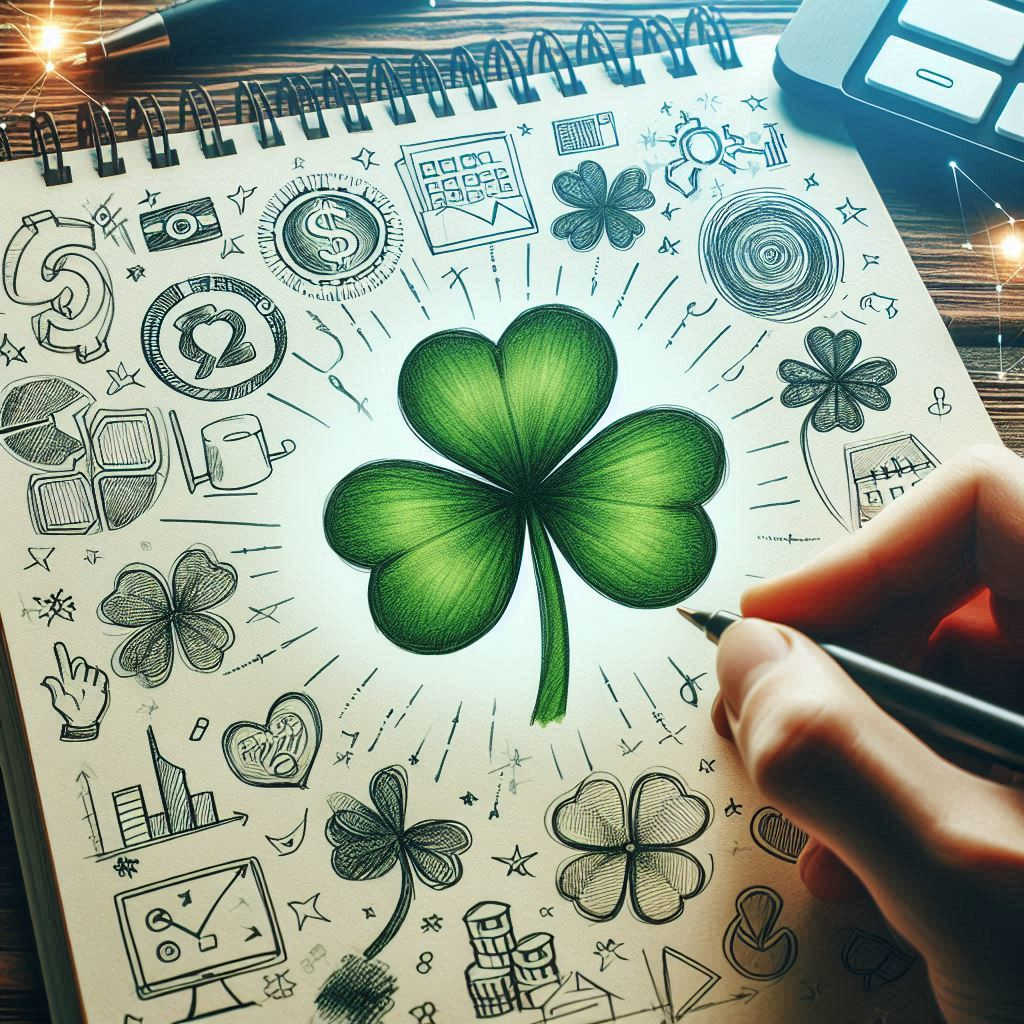Challenge
Stroke (CVA) symptoms need to be easily recognizable by everyone. While we may not be the highest-risk individuals ourselves, we should always be aware of those around us who might be.
How do we communicate with such a wide audience?
How do we reach all kinds of people?
Solution
Through one of the most far-reaching mediums of all time: art.
Introducing: Arte Cuidando Vidas (ACV) (“Art Saving Lives” that stands for the acronym for CVA in Spanish)
In Spanish, the acronym for stroke (ACV) cleverly aligns with “Arte Cuidando Vidas.” In English, we will refer to the campaign as Art Saving Lives.
This initiative features a virtual and physical art museum where the subjects of renowned works are depicted as suffering from a stroke.
How will we do it?
We’ll create an art exhibition in the main squares of cities across Colombia, inviting the public to explore a variety of replicas of famous artworks, altered to depict stroke symptoms in their figures.
Each piece will have a description of the symptoms and how to identify them. At the end of the tour, trained staff will give a brief but informative talk about the symptoms and the importance of noticing and acting quickly in response to a stroke.
Participants will receive a certificate of attendance.
The Mona Lisa with the left side of her face drooping.
In the 16th century, Leonardo Da Vinci’s Mona Lisa is seen sitting and admiring the landscape, but she can’t smile completely; the left side of her face is paralyzed. She also touches her left arm, which looks fatigued.
Virtual Museum
On the current “Actúa con Velocidad” website (Act Fast website), there will be a special section dedicated to the Stroke Museum (Art Saving Lives), where visitors can take a virtual tour and find out more about the dates and locations of the in-person exhibitions.
The experience will be the same in both versions of the museum, featuring replicas of famous artworks altered to show their subjects experiencing stroke symptoms.
As in the in-person museum, the virtual experience will educate participants and raise awareness about the importance of recognizing and acting quickly in response to strokes.


